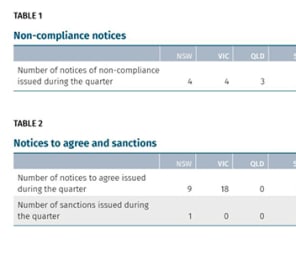When Prime Minister Anthony Albanese announced "historic aged care reforms" on 12 September there was no mention of retirement villages or land lease communities.
However, behind the new Aged Care Act and in particular co-contribution, that will be passed into law on 1 July 2025, there is a structural momentum that will change the value proposition of seniors accommodation.
First, the Government (and the Opposition) acceptance of customer co-contribution of payments for the cost of aged care is softening up even moderately wealthy Baby Boomers to the fact that they are going to have to pay for support to live in their home and in nursing homes.
This new paid support in the customer’s home means all non-care support like cleaning, meal preparation, driving to a doctor’s appointment and the like, and they will have to pay part or all of it.
In a nursing home, they will pay for their physical accommodation, the laundry and so on.
For both home and residential care, only the actual medical care will be fully paid by the Government.
Why is this significant? New Zealand has taught us when people have to pay, they become more discerning, and choose to pay to be in a retirement village rather than pay to be in an aged care home. A win for village marketers.
Secondly, in home care there will now be eight levels of support, from low level to higher levels for people who have higher acuity. The new regulations allow operators to register to only deliver lower levels of non medical support, which will have lower levels of regulation. This is significant.
Third, the Government (or more correctly, the Department of Health and Aged Care) is opening up to new ideas, understanding that structured seniors accommodation like retirement villages can be part of the solution for the lack of aged care beds, and lack of workforce, over the next decade.
For instance, it has announced a trial of pooling home care packages in a village so that a broader service can be funded to all residents, such as a village nurse or a bus for transport.
It has introduced a 12-week home care boost to funding of an extra $12,000+ to cover palliative care in the home (or village home).
It will fund home (or village home) technology.
While the new Aged Care Act is scheduled to come in 1 July next year, the full rollout and its impact is scheduled to take three years, to 2028.
This gives three years to soften up customers to the expectation they will have to pay for support to age well.
Village and LLC operators can strategise where they want to fit into this new world.
Our view is that your customers are likely to take that decision out of your hands as they decide they will buy into a village or LLC and not move out, relying on the operator or other home care provider to look after them up to death.
Add to this the fact that no new aged care beds are being built, and we strategise that we will have 100,000 village and LLC beds that are in effect aged care beds within five years. This drastically changes the village (and LLC) value proposition.
Perhaps this is what the Government strategises as well.










